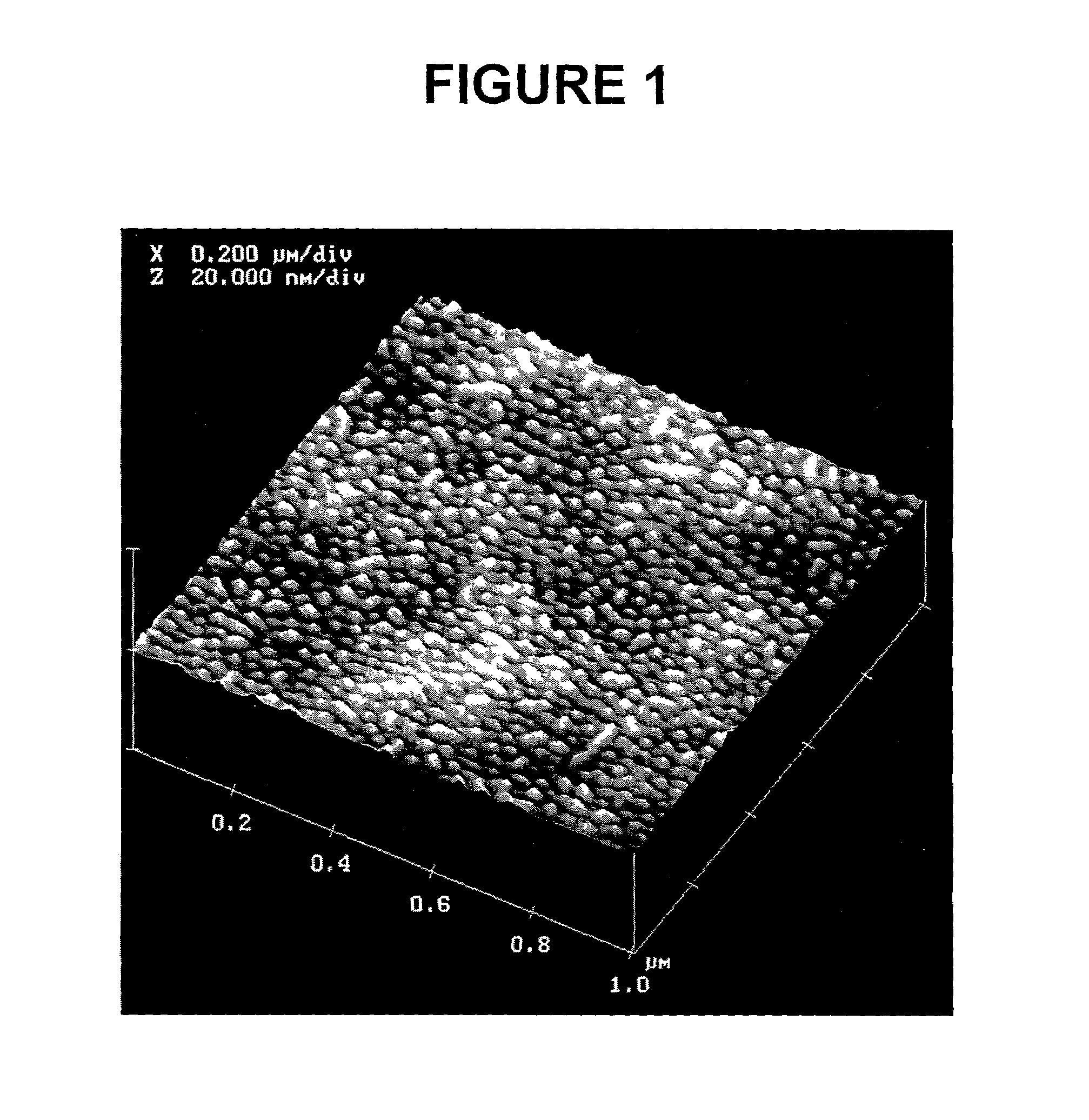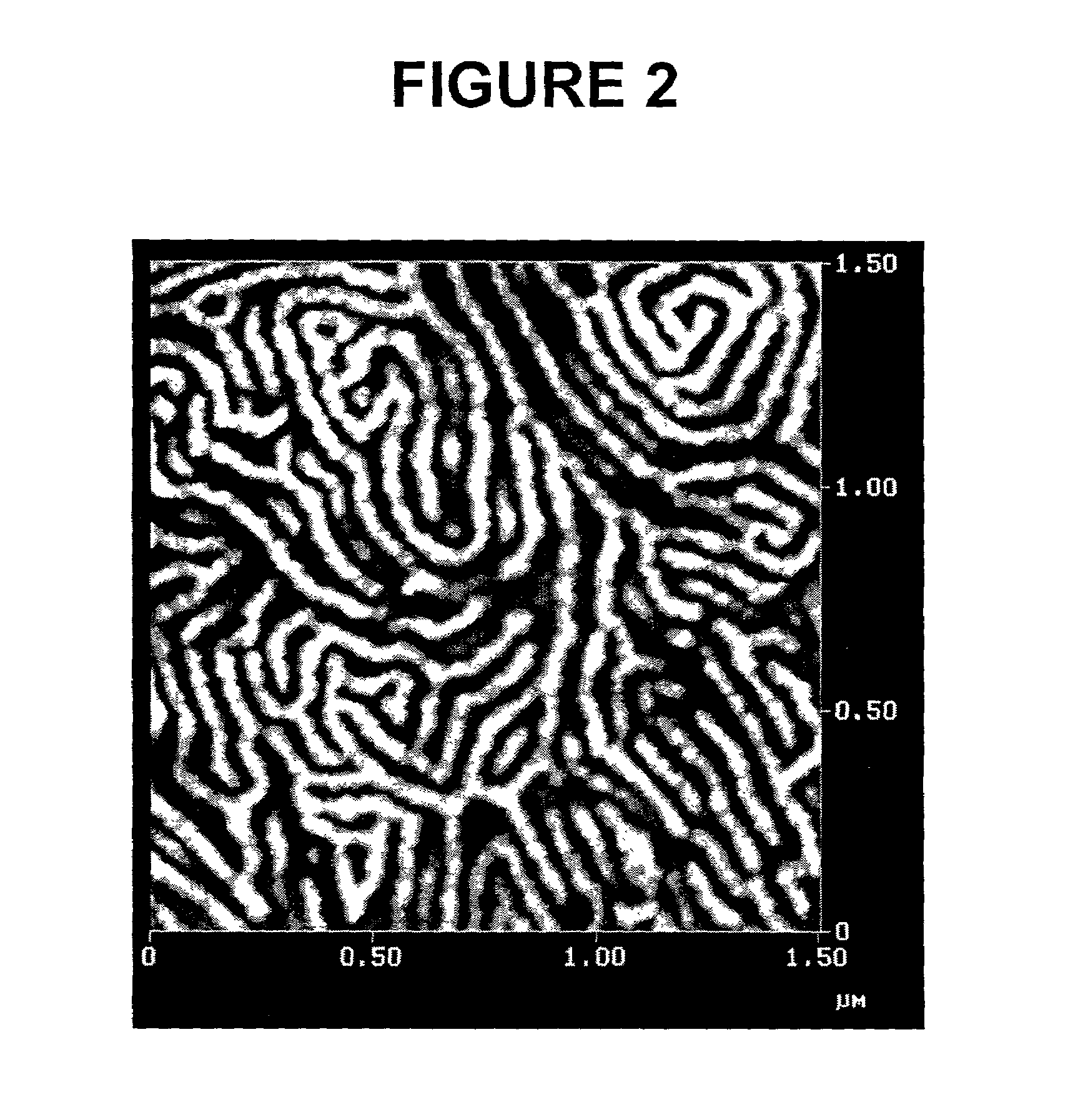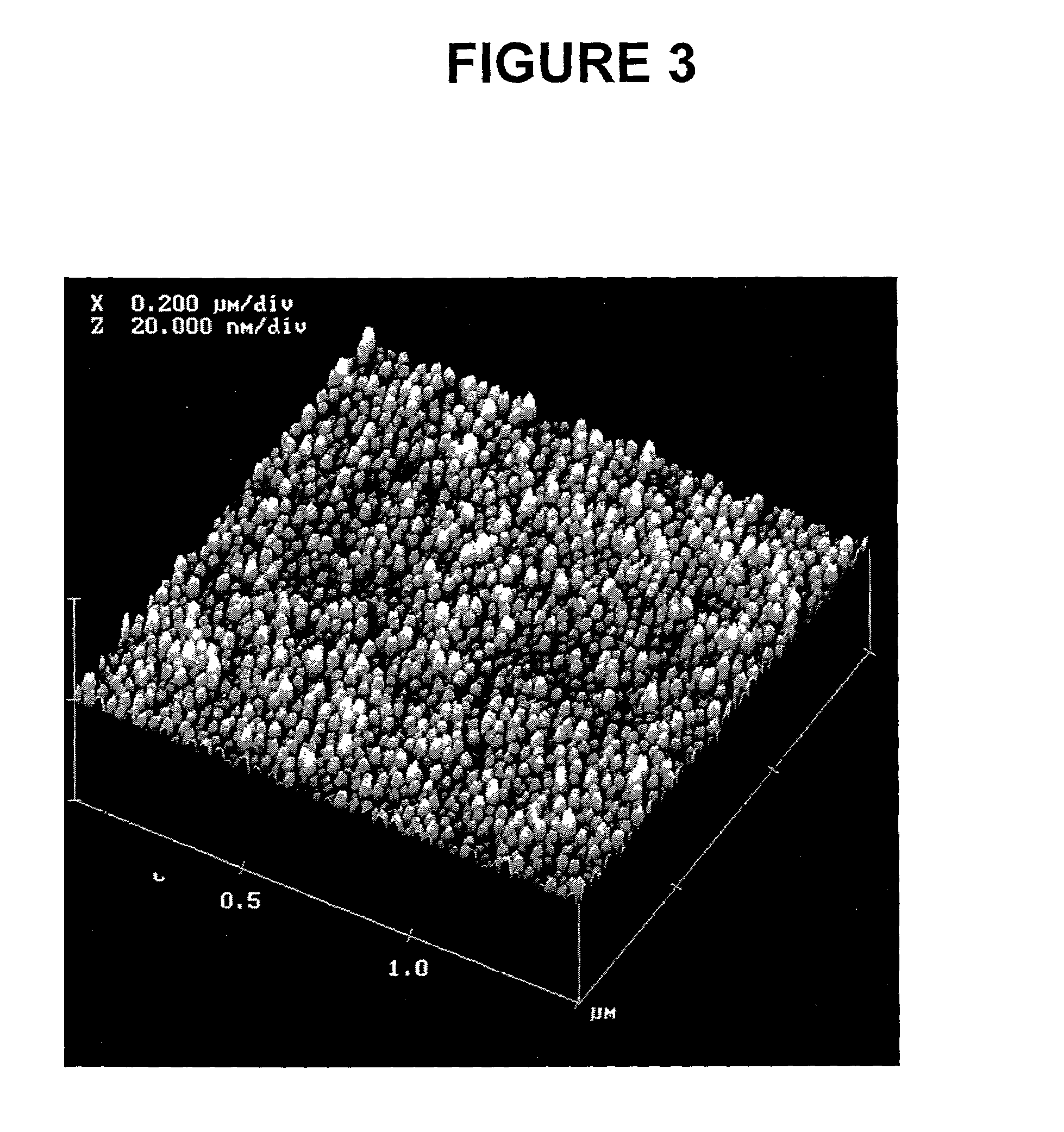Process for the preparation of nanostructured materials
- Summary
- Abstract
- Description
- Claims
- Application Information
AI Technical Summary
Problems solved by technology
Method used
Image
Examples
example 1
Preparation of Difunctional Poly(Butyl Acrylate)-Based Macroinitiator
example 1a
[0151]This example was conducted as a typical atom transfer radical polymerization. All liquids used in the experiment, except the initiator dimethyl 2,6-dibromoheptadioate (DM-2,6-DBHD), were purged with nitrogen for at least one hour before addition to the reaction flask.
[0152]
Reactants:CuBr0.0255 g(0.178 mmol)PMDETA0.0313 g(0.181 mmol)BA20 ml (17.88 g)(139.5 mmol)DM-2,6-DBHD38 μl (0.0604 g)(0.175 mmol)—amount two timeshigher than the concentration of thecatalyst (based on the bromine atoms)PhOMe 1 ml—standardfor GC
[0153]The catalyst components, CuBr and PMDETA, were mixed together in a 50 ml Schlenk flask. A stirring bar was added and the flask was evacuated and filled with nitrogen three times. The monomer, butyl acrylate (“BA”), and the solvent, anisole, were than added, DM-2,6-DBHD, and the flask was immersed in an oil bath at 70° C. After the temperature had equilibrated the initiator, was added. Conversion was followed by periodically removing samples and determining the con...
example 1b
Scale-Up of the Synthesis of the Poly(Butyl Acrylate)-Based Macroinitiator
[0156]After clarifying the kinetics of the polymerization of butyl acrylate, example 1A, the preparation of the macroinitiator was scaled up. The procedure was slightly modified.
[0157]0.0775 g (0.540 mmol) CuBr was added to a 250 ml Schlenk flask, the flask was then closed, evacuated, and filled with nitrogen several times. A deoxygenated solution of 110 μl (0.0913 g, 0.527 mmol) PMDETA in 2 ml anisole was added, followed by 60 ml (53.64 g, 418.5 mmol) of butyl acrylate. The flask was then placed in an oil bath at 75° C., and a deoxygenated solution of 0.1817 g DM-2,6-DBHD in 3 ml anisole was added. After 16 hours the reaction was terminated and the polymer was dissolved in 200 ml tetrahydrofuran (THF), and the solution passed through an alumina column twice to remove the catalyst. The THF was evaporated from the polymer solution and the purified difunctional macroinitiator thus prepared was used for the subse...
PUM
| Property | Measurement | Unit |
|---|---|---|
| Temperature | aaaaa | aaaaa |
| Temperature | aaaaa | aaaaa |
| Force | aaaaa | aaaaa |
Abstract
Description
Claims
Application Information
 Login to View More
Login to View More - R&D
- Intellectual Property
- Life Sciences
- Materials
- Tech Scout
- Unparalleled Data Quality
- Higher Quality Content
- 60% Fewer Hallucinations
Browse by: Latest US Patents, China's latest patents, Technical Efficacy Thesaurus, Application Domain, Technology Topic, Popular Technical Reports.
© 2025 PatSnap. All rights reserved.Legal|Privacy policy|Modern Slavery Act Transparency Statement|Sitemap|About US| Contact US: help@patsnap.com



